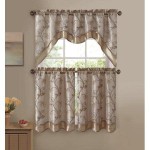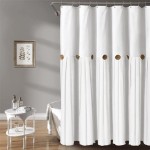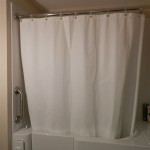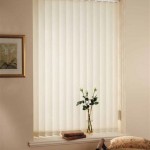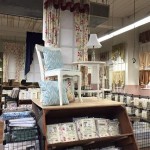```html
Blue and White Curtain Material: A Comprehensive Overview
Blue and white curtain material represents a versatile and enduring choice for interior design, offering a wide array of aesthetic possibilities and practical benefits. The combination of these two colors evokes a sense of serenity, cleanliness, and sophistication, making it adaptable to diverse styles ranging from classic nautical to modern minimalist. The selection of the appropriate blue and white curtain material requires careful consideration of factors such as fabric type, pattern, opacity, and intended use within the space.
The prevalence of blue and white in design stems from its natural associations. Blue, often linked to the sky and sea, promotes feelings of calmness and stability. White, signifying purity and light, enhances the sense of space and brightness. When paired, these colors create a balanced and harmonious visual effect, capable of transforming the ambiance of any room. The specific shade and texture of the chosen material can further influence the overall impact, allowing for tailored customization to meet individual preferences and design goals.
Key Considerations for Fabric Selection
The choice of fabric is paramount when selecting blue and white curtain material. Different fabrics possess distinct characteristics that affect their appearance, performance, and maintenance requirements. Common fabric options include cotton, linen, polyester, silk, and blends of these materials. Each offers unique advantages and disadvantages, which must be weighed against the specific needs of the application.
Cotton is a popular choice due to its affordability, breathability, and ease of care. It is generally durable and can be easily dyed in a variety of blue and white patterns. However, cotton is prone to wrinkling and may fade over time with prolonged exposure to sunlight. Linen, a natural fiber derived from flax, offers a more luxurious and textured appearance. It is highly breathable and becomes softer with each wash. Linen is more expensive than cotton and is also susceptible to wrinkling, though this is often considered part of its inherent charm.
Polyester is a synthetic fabric known for its durability, wrinkle resistance, and resistance to fading. It is often used in blends to enhance the performance of natural fibers. Polyester curtains are easy to maintain and are a good option for high-traffic areas or rooms with high levels of sunlight. Silk, a luxurious natural fiber, offers a smooth and lustrous appearance. It drapes beautifully and adds a touch of elegance to any space. Silk is more delicate than other fabrics and requires professional cleaning. It is also more prone to damage from sunlight and moisture.
Fabric blends offer a way to combine the desirable qualities of different fibers. For example, a cotton-polyester blend can provide the breathability of cotton with the wrinkle resistance of polyester. The optimal fabric choice depends on the desired aesthetic, budget, and practical considerations of the space.
The Impact of Pattern and Design
Beyond the fabric itself, the pattern and design of blue and white curtain material play a crucial role in shaping the overall aesthetic. A wide range of patterns are available, from simple stripes and polka dots to intricate florals and geometric designs. The scale and complexity of the pattern can significantly impact the perceived size and style of the room.
Stripes are a classic choice for blue and white curtains, offering a clean and timeless look. Vertical stripes can create the illusion of height, while horizontal stripes can make a room feel wider. Polka dots add a playful and whimsical touch, suitable for children's rooms or informal spaces. Floral patterns bring a touch of nature indoors, and can range from delicate and romantic to bold and contemporary.
Geometric designs offer a modern and sophisticated look, with options ranging from simple squares and triangles to complex interlocking patterns. The choice of pattern should complement the existing décor and furniture in the room. A bold and intricate pattern can serve as a focal point, while a more subtle pattern can blend seamlessly into the background.
The specific shade of blue and white used in the pattern also influences the overall effect. A light blue and crisp white combination creates a fresh and airy feel, while a navy blue and off-white combination evokes a more traditional and sophisticated look. The use of different shades and textures can add depth and dimension to the design.
Opacity and Functionality
The opacity of blue and white curtain material is another important factor to consider, as it directly affects the amount of light that enters the room and the level of privacy provided. Curtains are available in a range of opacities, from sheer and semi-sheer to blackout and room-darkening options. The appropriate opacity depends on the intended use of the room and the desired level of light control.
Sheer curtains allow a significant amount of light to filter through, creating a soft and diffused effect. They provide minimal privacy and are often used in conjunction with heavier curtains or blinds. Semi-sheer curtains offer a balance between light and privacy, allowing some light to enter while obscuring the view from outside. They are a good option for living rooms or dining rooms where some natural light is desired but privacy is also important.
Room-darkening curtains block out a significant amount of light, making them ideal for bedrooms or home theaters. They can help to improve sleep quality by reducing light pollution and can also help to reduce glare on screens. Blackout curtains provide the highest level of light blockage, completely eliminating light from entering the room. They are often used in nurseries or rooms where complete darkness is required.
The choice of opacity should also take into account the direction the window faces. South-facing windows receive the most sunlight and may require heavier curtains to prevent overheating and fading. North-facing windows receive less sunlight and may benefit from lighter curtains to maximize the amount of natural light entering the room. In addition to opacity, the functionality of the curtains should also be considered. Features such as thermal insulation, noise reduction, and ease of operation can enhance the overall performance and satisfaction with the product.
Ultimately, selecting the right blue and white curtain material hinges on a thoughtful evaluation of fabric properties, pattern aesthetics, and functional requirements. Careful consideration of these elements will result in curtains that not only complement the décor but also enhance the overall comfort and ambiance of the space. The interplay of these factors transforms simple fabric into a key element of interior design, contributing significantly to the desired atmosphere and functionality of the room.
```
Retro Print Fabric Blue White Upholstery Swirl Indigo Abstract Wave Tile Cotton Canvas Drapery Sofa Decor Yard Etsy

Linen Rod Pocket Curtain Panel Off White Blue Tuscany Linenme

Uptown Home Ombre Indigo Blue White Rayon Blend Heavy Linen Texture Window Curtain Panel Gradient Cream To Gray Drapes For Living Room Bedroom

Blue Porcelain Printing Beige Linen Cotton Semi Blind Curtain Fabric Cream Tassels Trim Shade Curtains Blackout Sign Etsy

Blue And White Curtain Fabric

Alishomtll Curtains Satin Light Filtering Grommet Window Drapes For Bedroom Living Room 52 X 84 L 2 Panels Blue White Striped

Fresh Elegant Blue Curtain White Flower Printed Rod Pocket Temu

Flat 40 Beautiful Sapphire Blue Kashmir Crewel Upholstery Fabric Made To Measure Curtain Luxury Furnishing Etsy

Geisha Japanese Pagoda Oriental Twill Curtain Fabric Material 55 Wide Blue

Neutral Blue Stripes Linen Drapery And Upholstery Fabric By The Yard

